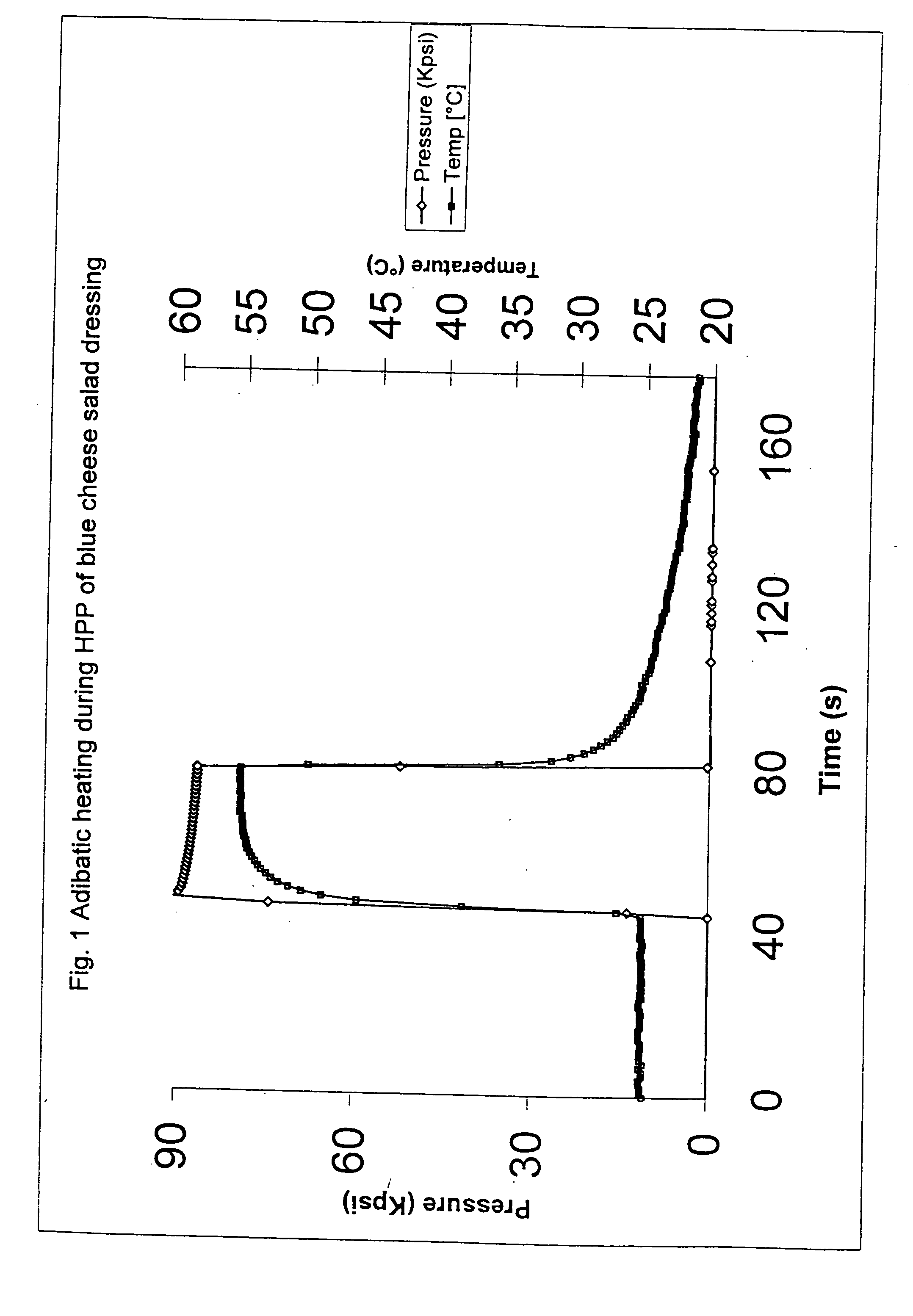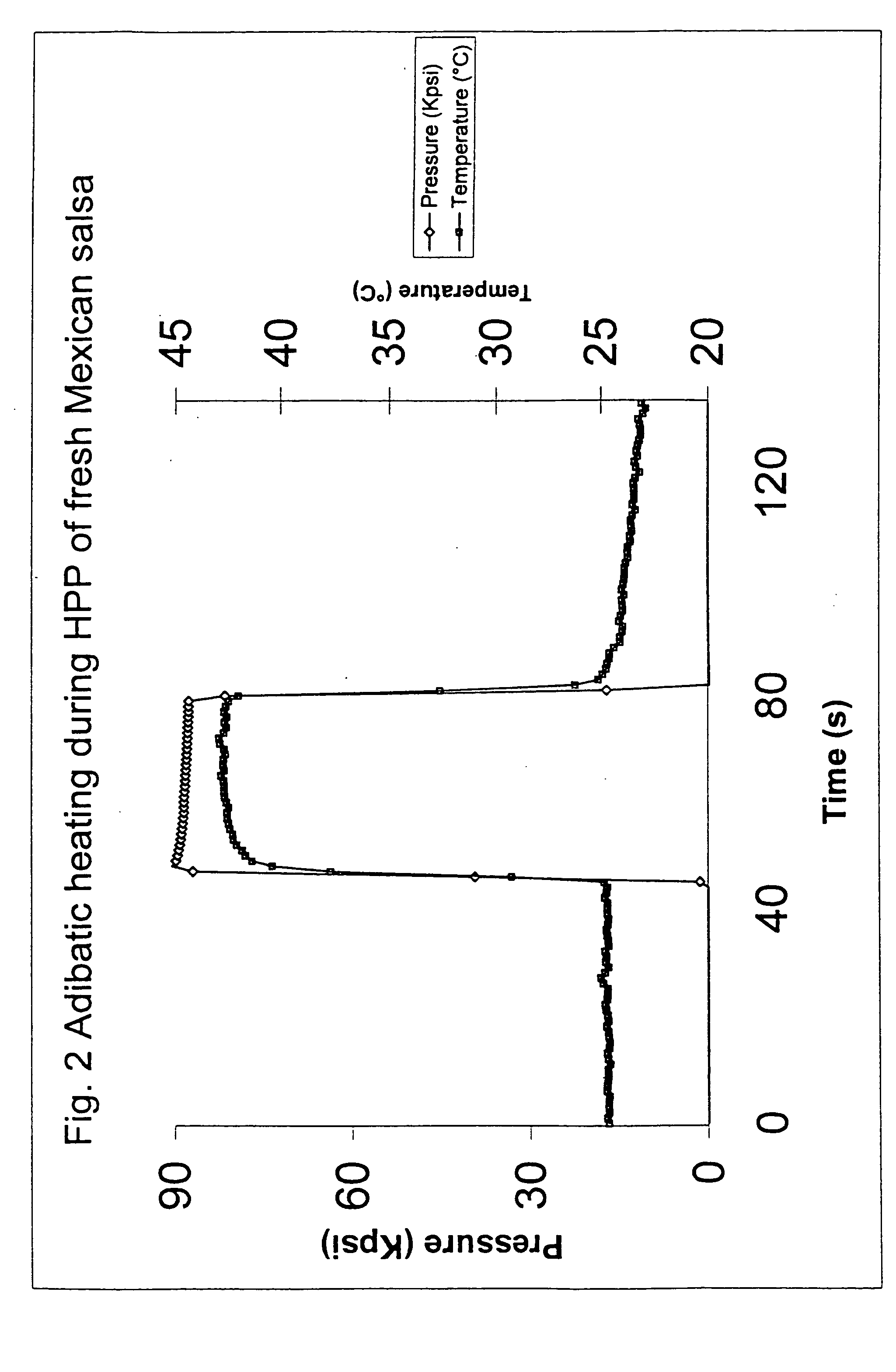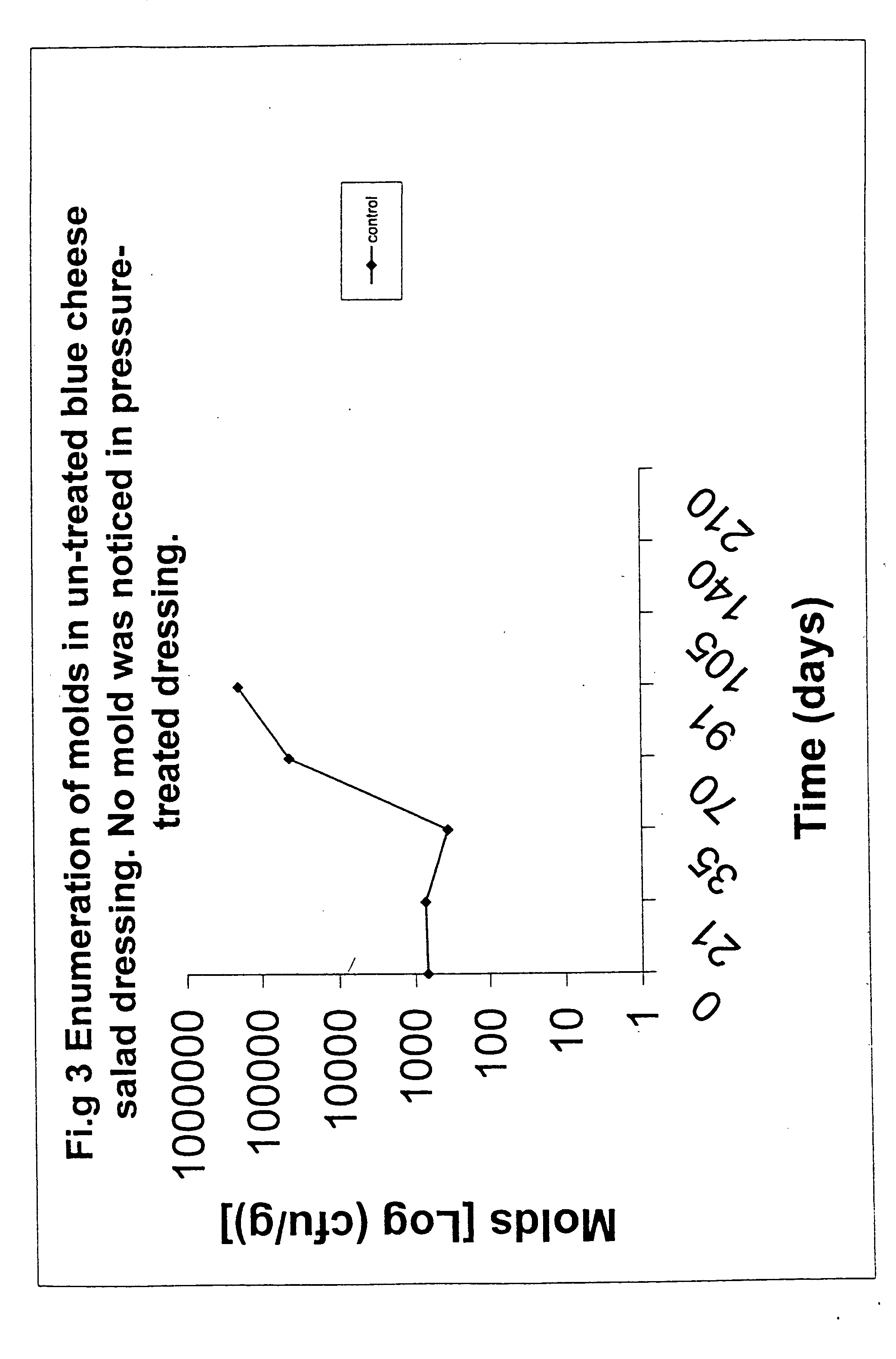Method to extend the shelf-life of food products using hydrostatic high-pressure processing
- Summary
- Abstract
- Description
- Claims
- Application Information
AI Technical Summary
Benefits of technology
Problems solved by technology
Method used
Image
Examples
Example
[0026] The method of the present invention utilizes hydrostatic high-pressure processing to extend the shelf-life of food products by inactivating pathogenic microorganisms. As more specifically set out below, the steps of the method are placing a food product into a high oxygen barrier, flexible, sealable container; removing all of the air from the container; sealing the container; placing the container into a high pressure food processor; adjusting the temperature of the pressurizing medium to a minimum of 10 degrees Fahrenheit (−12° C.) so as to reduce the effects of adiabatic heating; adjusting the pressure within the high pressure food processor up to between 10,000 and 130,000 psi; holding the pressure for a minimum of 0.1 seconds; releasing the pressure; and removing the food product from the food processor. The high pressure food processor of the present invention may be any commercially available high pressure food processor such as Avure Technologies' Model 35L or Elmhurst...
PUM
 Login to View More
Login to View More Abstract
Description
Claims
Application Information
 Login to View More
Login to View More - R&D
- Intellectual Property
- Life Sciences
- Materials
- Tech Scout
- Unparalleled Data Quality
- Higher Quality Content
- 60% Fewer Hallucinations
Browse by: Latest US Patents, China's latest patents, Technical Efficacy Thesaurus, Application Domain, Technology Topic, Popular Technical Reports.
© 2025 PatSnap. All rights reserved.Legal|Privacy policy|Modern Slavery Act Transparency Statement|Sitemap|About US| Contact US: help@patsnap.com



